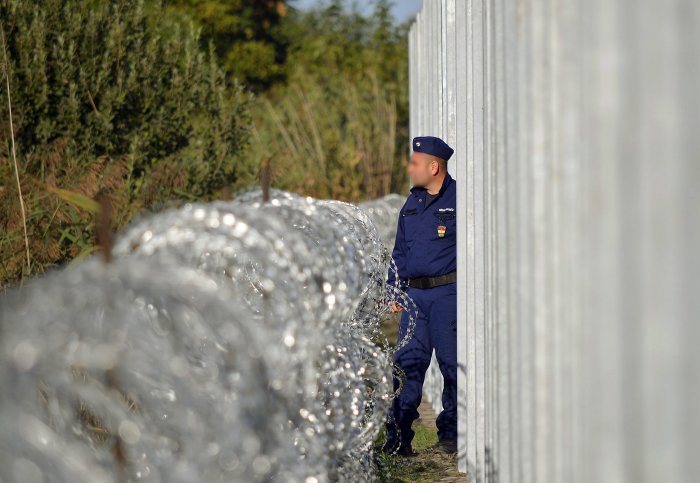Industry Seems Resilient to Deteriorating Global Trends

Following a relatively slow start to the year, Hungary’s industry had come to life again by the second month of 2019. Based on the promising data, most analysts now put their annual growth forecasts at between 4.5% and 5.5%.
Having performed above expectations, Hungary’s industrial production increased by 5.9% in February on a year-on-year basis, the Central Statistical Office (KSH) said in its second estimate of the data on April 12. The working day adjusted index was equal to the non-adjusted one.
Industrial output, according to both the seasonally and working-day adjusted index, was above the previous month’s level by 1%. The acceleration in the second month of the year came after a relatively weak January, when industrial output rose by only 4.4%, slowing down from 5.4% in December.
According to the KSH data, the volume of industrial exports grew by 7.7% year-on-year in February. Within export sales in manufacturing, the 38% representing transport equipment exports went up by 12.5%, while in the manufacturing of computer, electronic and optical products (accounting for 14% weight), the volume rose by 12.2%. In February, industrial domestic sales increased by 3.8%, within which domestic sales in manufacturing were 7.6% higher compared to the same month of the previous year.
Within the industry sector, production grew by 6.5% in manufacturing (which has a decisive weight of 95%), and was up by 60% in mining and quarrying, which carries much less weight. The output of energy industry declined by 5.2%, mainly as a result of milder weather compared with the previous year. (According to the Hungarian Meteorological Service, the February 2019 average temperature was 3.8ºC higher than the February 2018 average.
In its detailed report, the KSH said that the manufacture of transport equipment (representing 31% of manufacturing output) grew by 10% year-on-year. The manufacture of motor vehicles went up by 15.1%, while the manufacture of parts and accessories for motor vehicles rose by 4%.
Significant Groups
The manufacture of computer, electronic and optical products (accounting for 11% of manufacturing) increased by 11.4%. Of the two most significant groups, the manufacture of communication equipment rose by 17.3%, while the manufacture of consumer electronics went up by 24%.
The manufacture of food products, beverages and tobacco products (responsible for almost 10% of manufacturing) grew by 5.4% compared to the same month of the previous year. Of its representative groups, the processing and preserving meat and the production of meat products (having the largest weight at 26%) increased by 1.1%, while the manufacture of beverages, which has the second largest weight, rose by 19.7%. Decreases were recorded in three groups, of which the manufacture of tobacco products fell most, by 22%.
As for geographical spread, industrial production grew in every region of the country, KSH said. The highest growth was reported in the Budapest region (10.7%), whereas in all others volume increases of between 0.7% and 10.6% were measured.
The February data suggests a greater-than-expected resilience against a deteriorating outlook on Hungary’s export markets, national news agency MTI wrote, citing various analysts. K&H Bank’s Dávid Németh attributed the growth in February mainly to the manufacturing of cars and electronic goods. While industry is showing a rather volatile performance, it has basically been accelerating since last September, which tendency goes against the slowing pace of the European economy.
“This is mainly due to the new capacities added to the sector, the capacities of which are not only balancing the recessing international environment but were able to give it a boost too,” Németh opined.
As for a full-year growth, Németh expects that industrial performance will rise at somewhere between 4% and 5%. The strong start to the year makes the latter more likely, the analyst added.
Auto Acceleration
Gergely Suppan, of Takarékbank, attributed the acceleration in vehicle manufacturing to the fact that the Audi plant in Győr likely made up for the output lost due to the strike in January. New capacities, the production of new vehicle models and robust domestic demand might further boost industrial performance this year; however, the decreasing economic performance in Europe, the slowing of the Chinese and global economies, and uncertainties connected to Brexit all pose great risk to the growth, Suppan warned. Analysts at Takarékbank now forecast a notable 5.5% annual growth rate after the 3.6% registered for 2018.
Erste Bank senior analyst Orsolya Nyeste said that industrial performance was again a positive surprise, and the strong start to the year shows that the sector is resilient to the deteriorating global performance and the slowing economies in Hungary’s main export markets. She expects moderate growth for the following months and puts the annual growth rate at between 4.5% and 5%.
Hungary’s industrial performance was also outstanding when measured against member states in the European Union: according to the latest Eurostat data, the industrial output of the Eurozone was down by a seasonally adjusted 0.2% in February from the same period of last year, and was stagnating. Hungary ranked third in the second month of the year, following the 6.8% increase in Poland and 6.6% growth in Bulgaria.
Numbers to Watch in the Coming Weeks
KSH will publish data on the Hungarian labor market on April 29, and the following day, earnings statistics will also come to light. Retail trade figures for March will be published on May 6, and industrial output data for March will be released on May 8. A day later, the KSH will come out with the consumer price index for April.
SUPPORT THE BUDAPEST BUSINESS JOURNAL
Producing journalism that is worthy of the name is a costly business. For 27 years, the publishers, editors and reporters of the Budapest Business Journal have striven to bring you business news that works, information that you can trust, that is factual, accurate and presented without fear or favor.
Newspaper organizations across the globe have struggled to find a business model that allows them to continue to excel, without compromising their ability to perform. Most recently, some have experimented with the idea of involving their most important stakeholders, their readers.
We would like to offer that same opportunity to our readers. We would like to invite you to help us deliver the quality business journalism you require. Hit our Support the BBJ button and you can choose the how much and how often you send us your contributions.


.png)







.png)
